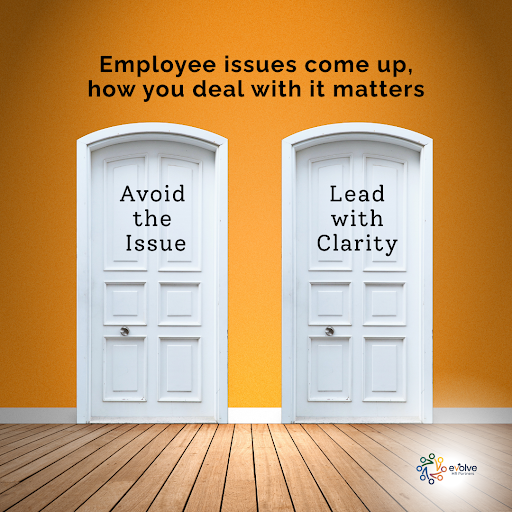How to Handle a Difficult Employee Situation – Without Making It Worse
No matter how great your team is, you will eventually face a tough situation. It might be poor performance, attitude issues, or a serious complaint. These moments are stressful, but how you respond can either defuse the issue or escalate it.
Step 1: Get the Full Picture
Do not rely on secondhand information or assumptions. Talk directly with those involved, take notes, and listen with an open mind. Approach the situation with curiosity, not judgment.
Step 2: Document Everything
This is one of the most important steps. Keep written records of conversations, dates, behaviors observed, and actions taken. If a problem escalates, documentation will be your best defense.
Step 3: Be Clear and Direct
When giving feedback to an employee, stick to the facts, stay neutral, and be clear about how the behavior affects the team or business. Below are a few examples to show what that can look like.
|
Ineffective |
Effective |
|
“You’ve been really unprofessional lately. Clients are annoyed, and it’s making us look bad.” ❌ Vague, judgmental, and emotionally charged. |
“I’ve noticed several client emails went unanswered for more than 48 hours, including one from the Smith account on Tuesday that wasn’t replied to until Friday. That delay caused some concern on their end.” Follow-up: “Can you walk me through what happened? Is there a process issue or something getting in the way?” |
|
“You’re always late, and it’s frustrating.” ❌ Uses absolutes, focuses on emotion. |
“You’ve arrived after your scheduled start time three times this week—Monday, Wednesday, and today. That has delayed opening responsibilities and impacted the team’s ability to start on time.” Follow-up: “Is there something going on that’s affecting your schedule? How can we work on a solution?” |
|
“Your attitude in meetings is a problem.” ❌ Vague and confrontational. |
“In yesterday’s team meeting, you interrupted others twice and made a comment that came across as dismissive. It shifted the tone of the conversation and made it harder for others to speak up.” Follow-up: “What was going on in that moment? |
Step 4: Set Expectations and a Plan
Employees should leave the conversation knowing exactly what needs to change, by when, and what support will be offered. Set a follow-up date and document the plan.
Step 5: Know When to Escalate
If the issue involves harassment, discrimination, or potential legal concerns, escalate it. In California, employers are required to take all reasonable steps to prevent and correct harassment or discrimination. Consult an HR expert or legal counsel if needed.
Avoid Common Pitfalls
- Do not delay difficult conversations
- Do not ignore employee complaints, even if they seem minor
- Do not retaliate or treat the employee differently after the issue is raised
Tough situations are part of leadership, but you do not have to handle them alone. When you approach challenges with clarity, consistency, and the right HR guidance, you not only protect your business, you create opportunities for growth and trust. If you’re navigating a tricky employee issue or want help building better processes for the future, let’s connect. Evolve HR Partners is here to support you with practical solutions and a steady hand when it matters most.

